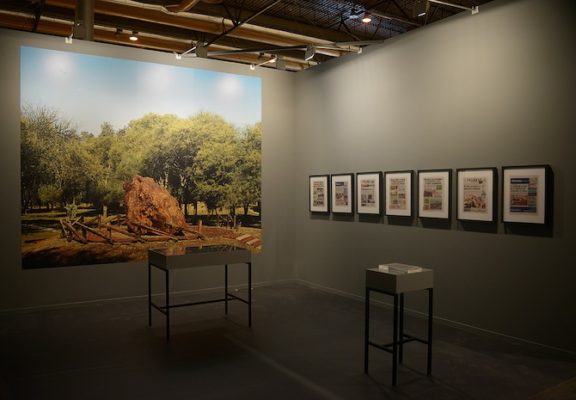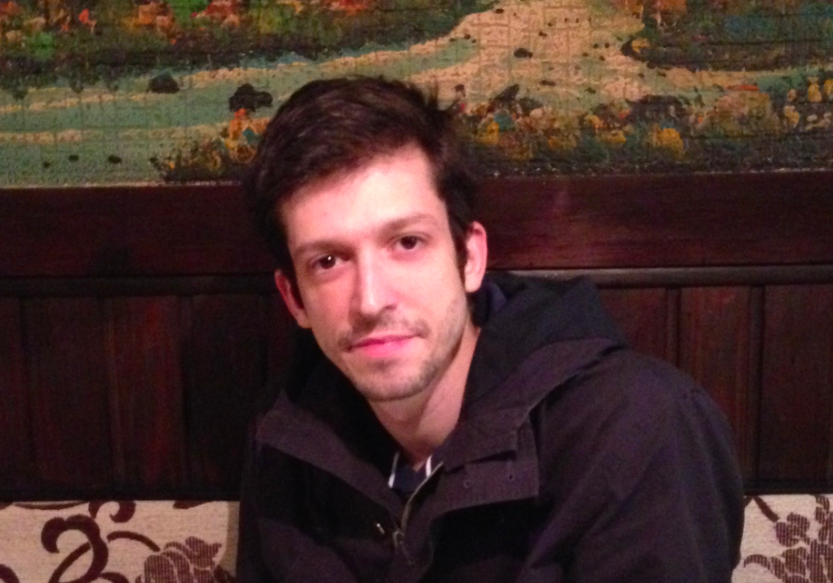Search
To search for an exact match, type the word or phrase you want in quotation marks.
A*DESK has been offering since 2002 contents about criticism and contemporary art. A*DESK has become consolidated thanks to all those who have believed in the project, all those who have followed us, debating, participating and collaborating. Many people have collaborated with A*DESK, and continue to do so. Their efforts, knowledge and belief in the project are what make it grow internationally. At A*DESK we have also generated work for over one hundred professionals in culture, from small collaborations with reviews and classes, to more prolonged and intense collaborations.
At A*DESK we believe in the need for free and universal access to culture and knowledge. We want to carry on being independent, remaining open to more ideas and opinions. If you believe in A*DESK, we need your backing to be able to continue. You can now participate in the project by supporting it. You can choose how much you want to contribute to the project.
You can decide how much you want to bring to the project.

Following in the steps of William Cassidy, Luisa Villar and other explorers and scientists, Guillermo Faivovich (1977) and Nicolás Goldberg (1978), in 2006, began a guide to the Campo del Cielo, a project focussing on the then little known reservoir of meteorites in a region some eighty kilometres long and 3 wide, situated in the provinces of Chaco and Santiago del Estero, in Argentina. The product of a unique iron asteroid of some 800 tonnes that fragmented into pieces on entering the atmosphere, Campo del Cielo comes with a history plagued with thefts, losses and intercontinental journeys of very heavy stones, in successive chapters laid out in exhibitions and (until now) two books. The participation of Faivovich and Goldberg in the special project zone of Arco 2013 is within the framework of the second instalment, El Chaco, that animated dOCUMENTA (13) right from the start, until it became a reiterated piece in the curatorial discourse of Carolyn Christov-Bakargiev, filling her agenda with more than the odd unofficial journey to the region of these buried celestial treasures.
Each chapter of the saga revolves around one specific meteorite, of the many buried, lost or still to be discovered in the chaqueño soil. Each chapter also develops a particular way of dealing with the meteoric material as an object of study and display. The first volume (El Taco, published in 2010) was an essay about the exhibition of the physical reuniting of the two parts of a meteorite cut in half: one part of El Taco on permanent display outside the Planetarium of Buenos Aires and the other zealously conserved in the basement of the Smithsonian, in Washington. Both coincided for the show in Portikus, in Frankfurt, also in 2010, where they evidenced their different destinies and conditions of conservation. The second episode featured the meteorite El Chaco, that couldn’t however abandon its permanent site in the Campo del Cielo where it is exhibited, but which assumed a forceful visibility in the Friedrichsplatz in Kassel, last year. The political and media debate surrounding it became the star rather than the actual enormous mass of iron. The third instalment, programmed for the next few years, is to do with the Mesón de Fierro, a fundamental piece in the history of the Campo del Cielo, which at the moment, however, has disappeared.
These three possible states of celestial matter in artistic exhibitions, will bring to an end, eventually, a project of several years located at the intersection of subgenres and traditions such as land art, appropriation art and those endeavours (often as absurd as they are monographic) labelled as artistic research. What is interesting is that Faivovich and Goldberg don’t labour the visuals of scientific research, so much as propose a new interdisciplinary ambit as the object of artistic study. They don’t promote any university discourse in the form of an artistic project so much as maintain a state of splendid silence with regard to the motivations, objectives and consequences of their investigation.
Until the moment they set to work, the complete bibliography about the Campo del Cielo counted on only 8 or 9 titles, including an article that appeared in the magazine of the Royal Society in 1788, a “Guía de meteoritos de la Argentina” by the Revista del Museo Argentino de Ciencias Naturales «Bernardino Rivadavia» of 1969 and a book by Antenor Álvarez published by Peuser in 1926, in Buenos Aires. Closer to the erudition of Borges than to organised scientific knowledge, the literature about Campo del Cielo fed off natural history as much as geophysics and pure curiosity. The artists took this little investigated object, of multiple dimensions, within their grasp and began to bombard it with questions, until they revived information that was to be found lost in deposits and oral histories transmitted amongst museum employees. Hence why the grammar of the exhibition chosen by Faivovich y Goldberg has in general little do with the tradition of land art and more to do with the documentary jargon of artistic investigation, appropriation and the bureaucratic monuments of academic and cultural institutions. The stockpile of data and the institutional attitude of the project, however, emanate an intensive use of computer technologies, beginning with online searches and the generalised use of the scanner as a multi-proposition tool for appropriation.
These characteristics give the project of Faivovich y Goldberg a certain computerised feel, detached from the physical space: Campo del Cielo, the place, dissolves into a collection of historical and geospatial coordinates, around which the artists lay out clusters of information found and rescued from extinction.

Claudio Iglesias is an art critic based in Buenos Aires. His latest books are Corazón y realidad (Consonni, Bilbao, 2018) and Genios pobres (Mansalva, Buenos Aires, 2018).
"A desk is a dangerous place from which to watch the world" (John Le Carré)